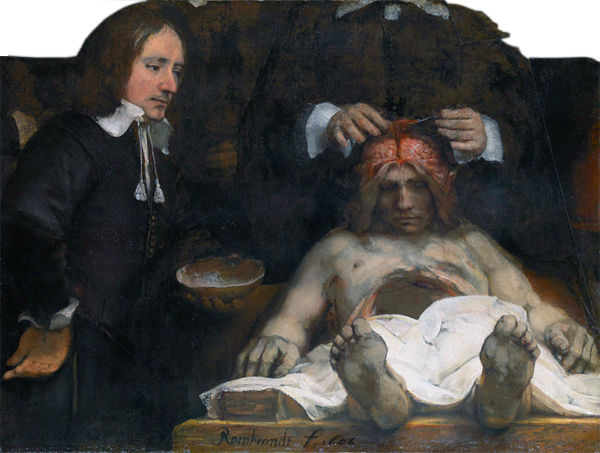The fame of a name
- James Tyler
- Feb 1, 2023
- 3 min read
You know you’re famous when people can recognize you by just one name: Galileo. Einstein. Cher. How about Rembrandt?
No need to call the famous Dutch Golden Age painter by his full name, Rembrandt Harmenszoon van Rijn, right?

Rembrandt was born in 1607 in Leiden, the Dutch Republic, and today is considered one of the world’s greatest artists, especially of portrait paintings. So the talented young painter got a special gig when he was 25 years old – to paint an autopsy.
It seems that back then, the public was invited once a year by the Amsterdam Guild of Surgeons to witness an autopsy and enjoy an anatomy lesson. To be fair, the cineplex hadn’t been invented yet.
On Jan. 31, 1632, a man known as Adriaen Adreianz, also known as Aris Kindt, was executed for stealing a winter coat. His body was then sent to the surgical guild in Amsterdam for the annual anatomy lesson. You might think then that Aris Kindt would be the focus of Rembrandt’s autopsy painting. But his famous creation is actually titled “The Anatomy Lesson of Dr Nicolaes Tulp.”

Dr. Tulp was the praelector or overseer of the surgical guild and as such was the lecturer giving the lesson that day. He’s the focus of the painting, and he and the other men depicted paid Rembrandt a fee for being memorialized.
Aris Kindt likely would have been happy to skip the whole affair, but he is also in the painting with his left arm cut open so Dr. Tulp can lecture on the muscles and tendons of Kindt’s hand and forearm.
It’s odd that Rembrandt shows the lesson starting with cutting open the corpse’s arm, since it was usually the abdominal cavity that was investigated first. Entrails and other bits don’t last too long, and the autopsies were done in the winter to minimize the stench as these events lasted a few days. Refrigeration hadn’t come along yet either.
There’s much to admire and scrutinize in this commission by the young artist. On the right side of the painting, for example, is an open book, which turns out to be a famous work on anatomy by Andrea Vesalius. The composition of Rembrandt’s painting is renowned for its pyramidical arrangement and for its dynamism created by having the men looking in varied directions. There’s also the interest Rembrandt generates with his use of chiaroscuro, the contrast between light and dark.
Rembrandt wasn’t the first artist to portray one of these 17th century anatomy lessons. His predecessors, who had been hired in previous years, had their depictions already hanging in the guild’s offices. Their work is likely very good. Rembrandt’s is something else entirely and is on view in the Mauritshuis, located in the center of the Hague in the Netherlands.

About 25 years later, Rembrandt returned to the subject of autopsies to create “Dr Deijman’s Anatomy Lesson” in 1656. Only a fragment of that work survived a fire years later, and it shows Dr. Jan Deijman dissecting the head of a corpse.
This time the corpse was Joris Fonteijn (also known as Black Jack), and since only the fragment survives, Fonteijn is front and center, brains on full display. Not exactly the painting you would want to hang in the dining room.
How many paintings Rembrandt created has been debated by art historians, so we’ll leave it at several hundred. Among his famous works are “The Storm on the Sea of Galilee,” “The Night Watch,” “Head of Christ” and “Danae.”
But as a young artist, he created “The Anatomy Lesson of Dr Nicolaes Tulp” on commission for the surgeons’ guild. In the top left corner, he signed his painting “Rembrandt, 1632,” and some historians believe it’s the first time he signed with his forename.
It’s a name that’s pretty well synonymous with “artist” now.



ความคิดเห็น